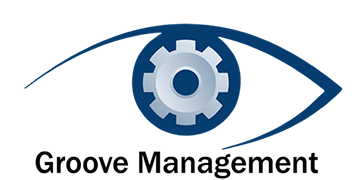You Are Either Billable or Buildable
The world of corporate training is evolving. Much like the organizational function responsible for people which was initiallly called personnel evolved to human resources, then to human capital and now to people, the training function is also undergoing an evolution and rebranding. Companies are realizing the critical importance of investing in employees ongoing development. With disruptive technologies such as AI, video chat, elearning platforms and automation the world of work is transforming at lightning speed. The skills that are built at the university level are quickly outdated in today’s fast paced world. This places an ever increasing responsibility on corporations to upskill and continuously develop their workers.
Unfortunately the number one constraint standing in the way of continuous employee development is time. Our time at work is consumed by meetings, emails and the pursuit of company goals leaving little to no time for investment in ourselves. There is literally very little to no space for learning. The function responsible for employee development has been the training function in the past. Training is being rebranded to learning and that is a very good thing. Training is something you do to people. Learning is something you do for yourself. The concept of learner centered programs and the ownness being placed on the learner allows for employees to take charge and own their own development. During a recent strategy offsite for a client, we agreed to rebrand their function from training to learning based on this concept.
Creating a learning organization is a pursuit for many companies that are forward looking. They acknowledge the speed with which the world is changing and they view learning as the key to driving the required transformation. A winning culture is one of the hardest competitive advantages to copy or reverse engineer. Companies that have learning as a cultural value have an immediate advantage because it drives agility and sets a tone for what is expected of the employees. This starts at the c-suite. If the CEO and executive team view learning as a component of their jobs then, they will model the behavior and hold others accountable for learning.
My friend and colleague Noah Rabinowitz who has held the Chief Learning Officer role at Intel and Moderna highlights that most organizations don’t make enough space for learning. He highlights Josh Bersin’s coined phrase of “learning in the flow” as an approach that has gained popularity but is really just another term for on the job training. Noah believes that organizations must create a margin of time for learning. His recommendation is that organizations should budget 20% of headcount time to learning. That means for every four FTEs another FTE should be dedicated to learning. Each person is fully productive when 80% of their time is dedicated to performing and 20% dedicated to learning. Noah sights professional services firms as doing this well. Noah spent time at Deloitte. Consulting firms are selling knowledge and their people are their asset, therefore they recognize the importance of investing in developing their people. In a consulting practice you are either billable or you are upskilling. Said another way, you are either Billable or Buildable. Dedicating time to build skills and to learn new things is important for individual and company growth.
My firm, Groove Management designs and delivers learning programs for clients. We don’t do training, we facilitate learning. This clear distinction separates us from other firms in our space. This extends to the executive coaching work we do with CEOs and other C-suite members. Our coaching helps leaders to carve out time each month that is dedicated to self-reflection and learning. When a coaching engagement ends and I follow up with a leader months later, the number one thing that they say they lost when the coaching ended was dedicated time to zoom out and reflect on their situation and their performance. Coaching is about learning and a key to learning is dedicating time to it.
The hardest part is breaking the cycle of meetings, email and low value activity to create more time and space for learning. In many of the workshops that Groove Management leads for clients we include the following question when asking participants to introduce themselves. “What do you get paid to do?” This eliminates the typical intro answer of sharing ones job title. It gets at the heart of what value do you create for the organization. My favorite answer to this question came from a group of early talent employees at Land O’Lakes. Twenty two out of the twenty five session participants answered, “I get paid to learn”. That mindset is powerful and it would benefit every organization if employees at all levels viewed learning as one of the key goals of their job.



